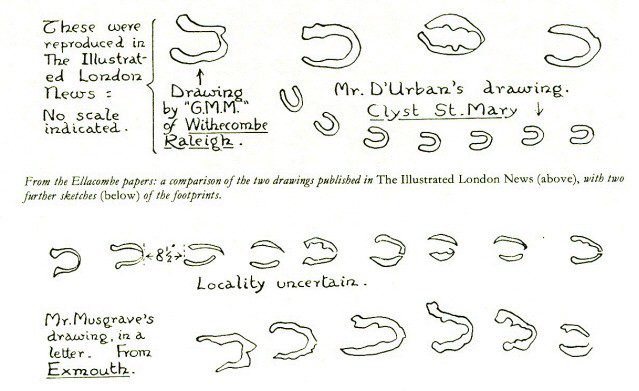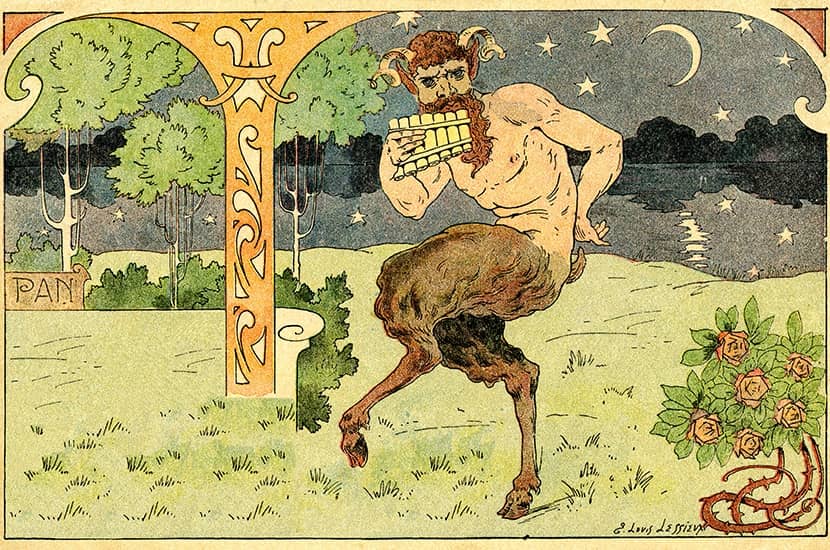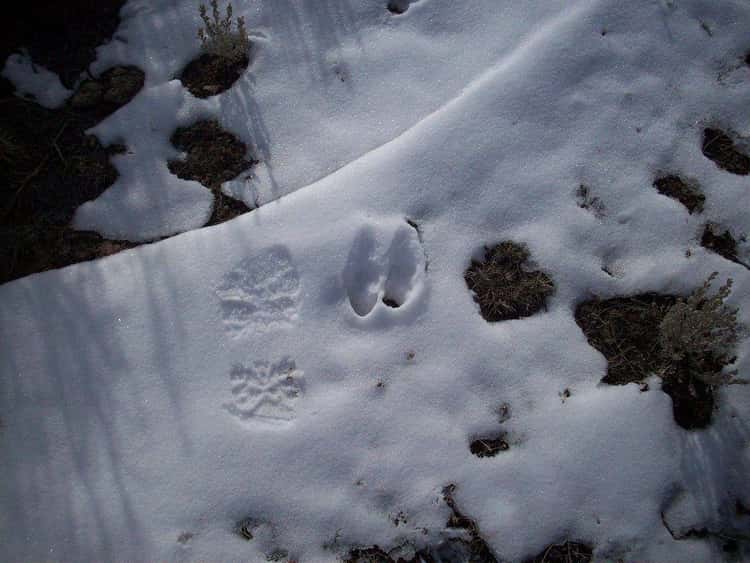Have you ever heard of the breadcrumb trail that Hansel and Gretel had left behind to find their way back home from the forest in the infamous Grim tale? Or have you ever seen a pair of fresh footprints in the mud and thought of following them with no knowledge of what lies ahead? Do you think a similar thought might have crossed the minds of the men of Devon when they encountered curious impressions in their streets? In the early hours of a Friday, on the 9th of February 1855, in Devon of England, people noticed something peculiar when they were going about their day on the white carpet that had spread the night before.
A single set of footprints went up a drainpipe with a girth of 4-inches and exited from the other end. While the few that saw this were still astonished, a scream was heard from the people across, saying that they had found something similar over the roof of their house. Soon, it was known throughout Devon that a pair of prints had made their way over high walls and open fields and traversed rivers stretching from the eastmost to the west nearly 100 miles with twists and turn like it had a vile will of its own. Curiously, not a soul bore witness to the creature that stalked the night so.
How Did The World Come To Know Of The Traversing Beelzebub?
Before long, the news traveled to the priest of Devon, only to learn that these diabolic trails were made by what seemed to be a single pair of hooves. Slit in some and a clear crest in the others. Walked with the gait of a man and had the size of a donkey. The Church was convinced that these belonged to the Devil. There was no other way. The hooved adversary had circled homes, and the church determined to slay the sinners in their slumber. The local vicar, Reverend G. M. Musgrove, wasted no time. He drafted a letter in haste and sent it to his trusted friend, Reverend H. T. Ellacombe, addressing it to The Illustrated London News, stating that what was held in the letter was “not for publication”.
But these letters were buried by time until they saw the light after an article was published by Devonshire Association in 1950 requesting more information on the phenomenon. This led to the discovery of an issue of Bell’s Life in Sydney, dated 18 February 1855, which explained the happening in vivid detail and the vicar’s letters. Mike Dash, a renowned researcher, took great interest in the matter and, after years of documentation and research, published “The Devil’s Hoofmarks: Source Material on the Great Devon Mystery of 1855” in 1994 for the world to see. Now everyone wonders what the people of Devon could have done so wrong that they have the Devil at their tails

Theories: Were They Truly The Footprints Of The Devil?
Superstitious or not, many believe that the footprints truly belong to the Devil. One of the main accusations on the claim’s credibility comes from the dubious integrity of the people that saw them. As stated by Joe Nickell, a paranormal investigator and skeptic, there has been no visual evidence, and the so-called eyewitnesses’ accounts do not tally with each other. Thus, other theories have been proposed. Mike dash, the author, suggested that the hopping mice were responsible for the pattern since the way their limbs launch off the ground can engrave the surface with hoof-like contours.
Richard Owen, an English anatomist, theorized that the badgers might be at fault as they were the only probable native explanation. Author Geoffrey Household sourced from a local man by the name of Major Carter that the tales of his grandfather had informed him of an experiment conducted in Devonport. A shackled balloon had been set off, which caused much damage that the experimenters did not want to own, and so the Devil was a welcome distraction. This argument was refuted as it could not reason the erratic paths of the feet with the strings of the balloon being tangled to some forlorn branch.
The only two theories that were accepted by the community of Devon were that of the Devil and the Kangaroo. Rev. G. M. Musgrave, as it would seem, had popularized the belief that the prints were made by a kangaroo on the loose, which the parishioners happily agreed to. So, the “mystery” of the Devil’s Footprints was never solved.
Also Read: Lindsey Pearlman’s Cause of Death Revealed
Pan Of The Greek Or Devil Of The Bible?
After so many mentions of hooves. It might cross the minds of some people why this ominous trail was said to belong to the Devil and where the idea that Satan has hooves comes from. Though it seems like people have always known him to have cloven feet, that is not true. In the Christian texts, the devil is never depicted as a goat but better as an Angel of Light, yet when we think of him, all we picture is something out of a Stephen King or Lovecraft novel. The one who propagated it has to be Daniel Defoe, who mentioned “of the Devil, and particularly of the cloven foot” in one of his essays, but the occurrences of demonic creatures possessing goat-like bodies are seen throughout Jewish and Greco-Roman Mythology, ranging from seirim to fauns and satyrs.
But the concept paved its way into Christianity during its birth when the scriptures were traveling all over the world, especially in the Roman empire. This caused a mingling of the cultures and their ideologies of demons and gods, conceiving a new Satan that now had the form of a goat-like the god Pan of the Greeks, the god of the wild that indulged in abominable practices and was ruling hell like Hades, god of the underworld and the dead, punishing evil-doers for their sins.

Prevalently used in satanism and its other sects, the pentagram is used to depict the same amalgamation. Also, the reason why heathen and other older and more natural religions like Wicca shy away from the popular symbol.
Other Fiendish Sightings
The Jersey Devil of Southern Jersey is another trendy cousin. Said to stem from folklore, the creature is described to be bat-like with hooves. In the legend, Mother Leeds, thought to be a witch, gave birth to her thirteenth child, who transformed into a hideous creature and flew into the pines near their house in 1735. Another would be that of similar footprints found in Scotland 15 years before the Devon incident, where impressions identical to a foal were found in a single file. The prints were also found in Poland, reappearing every year on Sand Hill.
Some say an earlier event might have inspired the radical conclusion of the Devon residents— The Great Thunderstorm of Widecombe-in-the-Moor—during a Sunday service on the 21st of October, 1638. The legend has it that the devil made a pact with Jan Reynolds to have his soul if he is found playing cards during church service, and he exacts it by hurling a thunderstorm upon the church, where four were killed and six were injured. In more recent times, an old woman from Devon reported that she had seen the sunken prints that the Devil made in the snow, which garnered much attention in 2009.
But as of now, the mystery remains. While speculations are many, and each is free to reach their desired conclusion on the happening, we will end on an ambiguous note and leave the rest to the reader.





